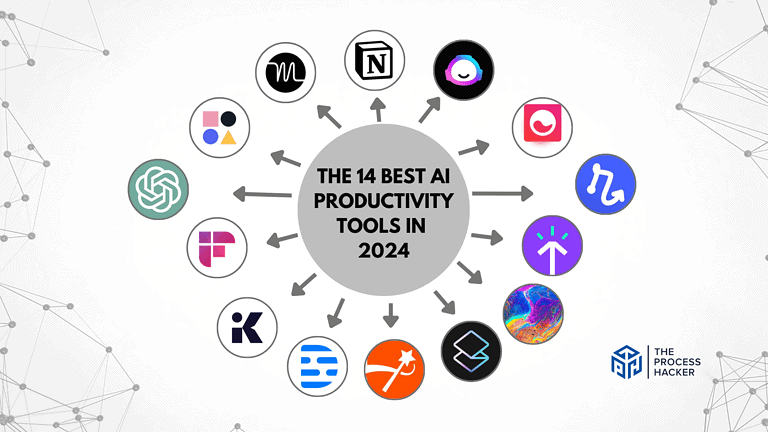How to Conduct a Powerful Monthly Review Even if You’re Busy
In today’s fast-paced business world, getting caught up in the day-to-day and losing sight of the bigger picture is easy. However, taking the time to step back and reflect on your progress is crucial for continued growth and success. That’s where a monthly review comes in.
A monthly review is a dedicated time each month to assess your goals, track your progress, and make adjustments as needed. It provides an opportunity to celebrate your wins, learn from your challenges, and set yourself up for even greater achievements in the months to come.
But what if you’re already swamped with work? How can you possibly fit in another task? Don’t worry; we’ve got you covered.
In this article, we’ll share practical tips and strategies for conducting a robust monthly review, even if you’re short on time. We’ll show you how to streamline the process, make it efficient, and, most importantly, make it impactful.
By the end of this article, you’ll have the tools and knowledge you need to conduct effective monthly reviews that propel your business forward, all without adding unnecessary stress to your already busy schedule.
What is a Monthly Review?
A monthly review functions as a strategic checkpoint for your business. Each month is a dedicated period where you detach yourself from daily operations and gain a macro perspective on your overall trajectory. You’ll assess your current position relative to your objectives, measure progress, and determine if any strategic adjustments are necessary.
Fundamentally, a monthly review is a formalized process of reflection and analysis. It involves examining your goals, tracking key performance indicators, and identifying areas for optimization. This process provides an opportunity to acknowledge accomplishments, extract lessons from challenges, and gain clarity on the path forward.
However, even amidst a demanding schedule, a monthly review doesn’t need to become an additional burden. It’s about enhancing efficiency and effectiveness.
Why You Need to Implement Monthly Reflection
Monthly reviews are crucial for personal and professional development. Here’s why they’re so important:
1) Provides a Big-Picture View of Your Progress
It’s easy to get caught up in the many tasks written on the business’s project management tracker and lose sight of the bigger picture. A monthly review allows you to step back and gain a comprehensive view of your progress over a longer period.
This bird’ s-eye view can be incredibly insightful, allowing you to see trends, patterns, and overall growth that might not be apparent on a day-to-day basis, so you know you and your employees are on the same page.
2) Helps Identify Patterns in Behavior and Productivity
By consistently tracking your activities and results, you can begin to notice patterns in your behavior and productivity. Maybe you’re most focused in the mornings or find that specific tasks take longer than expected.
Recognizing these patterns allows you to optimize your schedule, leverage your strengths, and mitigate potential obstacles.
3) Encourages Continuous Learning and Improvement
A monthly reflection isn’t just about celebrating successes; it’s also about acknowledging areas for improvement.
Reflecting on your challenges and missteps creates an opportunity for continuous learning and growth. Each review becomes a chance to refine your strategies, experiment with new approaches, and evolve your skills.
4) Aids in Setting and Adjusting Goals
The importance of annual goal planning can’t be overlooked; a monthly review allows you to break down those larger goals into smaller, more manageable milestones. You can assess your progress toward your objectives and make adjustments as needed.
You may be ahead of schedule and can set even more ambitious targets, or you may need to re-evaluate your approach to get back on track.
5) Increases Accountability and Motivation
Knowing that you’ll review your progress each month can be a powerful motivator. It creates a sense of accountability, encouraging you to stay focused and committed to your goals.
Plus, celebrating your accomplishments, no matter how small, can provide a much-needed boost of confidence and keep you motivated to continue pushing forward.
By incorporating regular monthly reviews into your routine, you can gain valuable insights into your performance, identify areas for improvement, and ultimately achieve greater success in all areas of your life.
How to Conduct an Effective Monthly Review
Conducting a monthly review is crucial, even for those with the busiest schedules. By following these structured steps, you can create a review routine that empowers you to stay aligned with your personal and professional aspirations.
#1) Reflect: Look Back on Your Past Month
Take a moment to revisit your calendar, to-do lists, and any journal entries you’ve kept. This step is about acknowledging what you’ve accomplished:
- Note all completed tasks, projects, and personal milestones.
- Recall significant events or interactions that impacted your month, allowing you to see how far you’ve come.
#2) Analyze: Assess Achievements and Challenges
This step is all about celebration and monthly reflection:
- Celebrate every accomplishment, no matter the size, recognizing the efforts you’ve put in.
- Identify where there was a struggle or obstacle and consider why it was challenging or where you went wrong.
- Evaluate your progress towards ongoing goals and projects, helping you understand where you stand.
#3) Action Plan: Set Goals for the Next Month
With your reflections and analysis in hand, it’s time to look forward:
- Create or update your objectives for the next month, ensuring they are clear and achievable.
- Break down larger goals into manageable, actionable steps to keep yourself on track.
- Think about potential challenges and strategize on how to navigate them.
#4) Learn: Extract Lessons and Insights
The final step of your monthly review should focus on extracting valuable lessons and insights:
- Consider what the previous month has taught you and how these lessons can influence your future strategies.
- Reflect on insights gained from successes and setbacks, using them to refine your approach and enhance your effectiveness in the coming month.
By regularly engaging in this monthly review process, you maintain a clear vision of your trajectory, adjust strategies as needed, and continually propel yourself towards more significant achievements.
Key Considerations for Successfully Planning and Conducting Monthly Reviews
Consistency is the backbone of any successful review process. To ensure you get the most out of your monthly reviews, consider these strategies:
- Set a Regular Date: Choose a specific day each month for your review. Whether it’s the last day of the month or the first weekend of the new month, sticking to a consistent schedule helps turn this into a habit that fosters sustained growth.
- Stay Goal-Oriented: Keep your reviews focused on your personal and professional goals. This isn’t just about what you’ve done but how what you’ve done aligns with where you want to be. Reflect on the steps you’ve taken toward your goals and the adjustments needed to keep moving forward.
- Structured Review Approach: Break down your review into key areas such as achievements, challenges, and insights. This structured approach ensures you cover all critical aspects without getting sidetracked.
By incorporating these considerations into your routine, you enhance your ability to track progress and catalyze continuous personal and professional development. Make this practice a cornerstone of your monthly routine, and you’ll find it significantly easier to navigate through your commitments and toward your ambitions.
Taking it to the Next Level: Enhancing Your Monthly Review Process
To truly elevate your monthly review process, integrate these advanced techniques:
- Incorporate Data Analysis: Track key metrics relevant to your goals. This could include quantifiable data like revenue figures, project completions, or qualitative data like client feedback. By monitoring these metrics, you will understand exactly where you stand in relation to your targets.
- Use Visualization Techniques: Employ tools like mind maps or vision boards to organize and clarify your thoughts and plans. These visual aids help solidify your goals and the steps needed to achieve them, making your path clearer.
- Engage an Accountability Partner: Share your review with a trusted colleague or mentor. This adds a layer of motivation and allows for a second set of eyes to provide insights that you might overlook. Their feedback can be invaluable in refining your approach and pushing you towards greater achievements.
With this approach, you can create a more dynamic and effective process that not only tracks your progress but actively contributes to your ongoing development. This approach ensures that your busy schedule is always aligned with your growth and success.
Alternatives to Traditional Monthly Reflection and Review
While monthly reviews are beneficial, they’re not the only way to keep track of your progress. Depending on your lifestyle and goals, you might find one of these alternatives to monthly reflection better suited to your needs:
- Quarterly Reviews: These allow for a broader perspective, giving you more time to work towards goals before assessing progress. They’re particularly useful if your projects or goals have longer timelines.
- Weekly Reviews Combined with a Monthly Summary: This approach is excellent for keeping yourself accountable in the short term while still aligning these efforts with a monthly overview. It helps maintain a steady pace towards monthly and quarterly goals.
- Theme-Based Reviews: Focus on specific areas of your life or business each month. For example, you might concentrate on personal development for one month and professional growth for the next. This monthly reflection method allows for a more targeted and in-depth analysis of each aspect of your life or business, fostering focused improvements.
By exploring these alternatives, you can customize your review process to fit your personal rhythm and requirements, ensuring that you stay busy and, effective and aligned with your broader goals.
Final Thoughts on Monthly Reviews
Mastering the art of monthly reviews can be transformative, even for those with busy schedules. By consistently applying these techniques, you’ll gain valuable insights into your life, boost your productivity, and make steady progress toward your goals.
Remember, the key is to start simple, be consistent, track your previous month’s performance, and adjust your process as needed. With practice, you’ll discover the monthly review method that works best for you, leading to continuous growth and improved satisfaction in all areas of your life.







